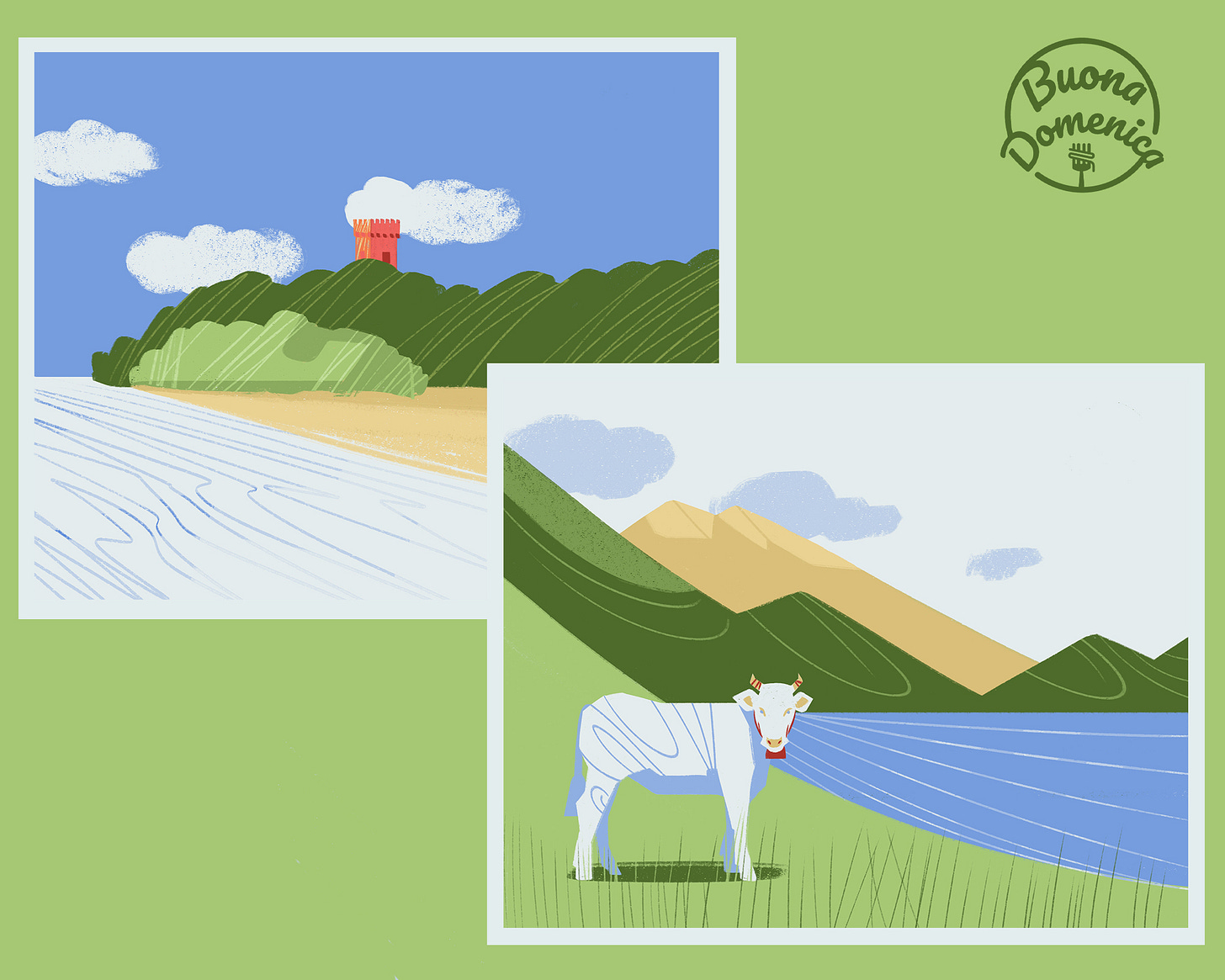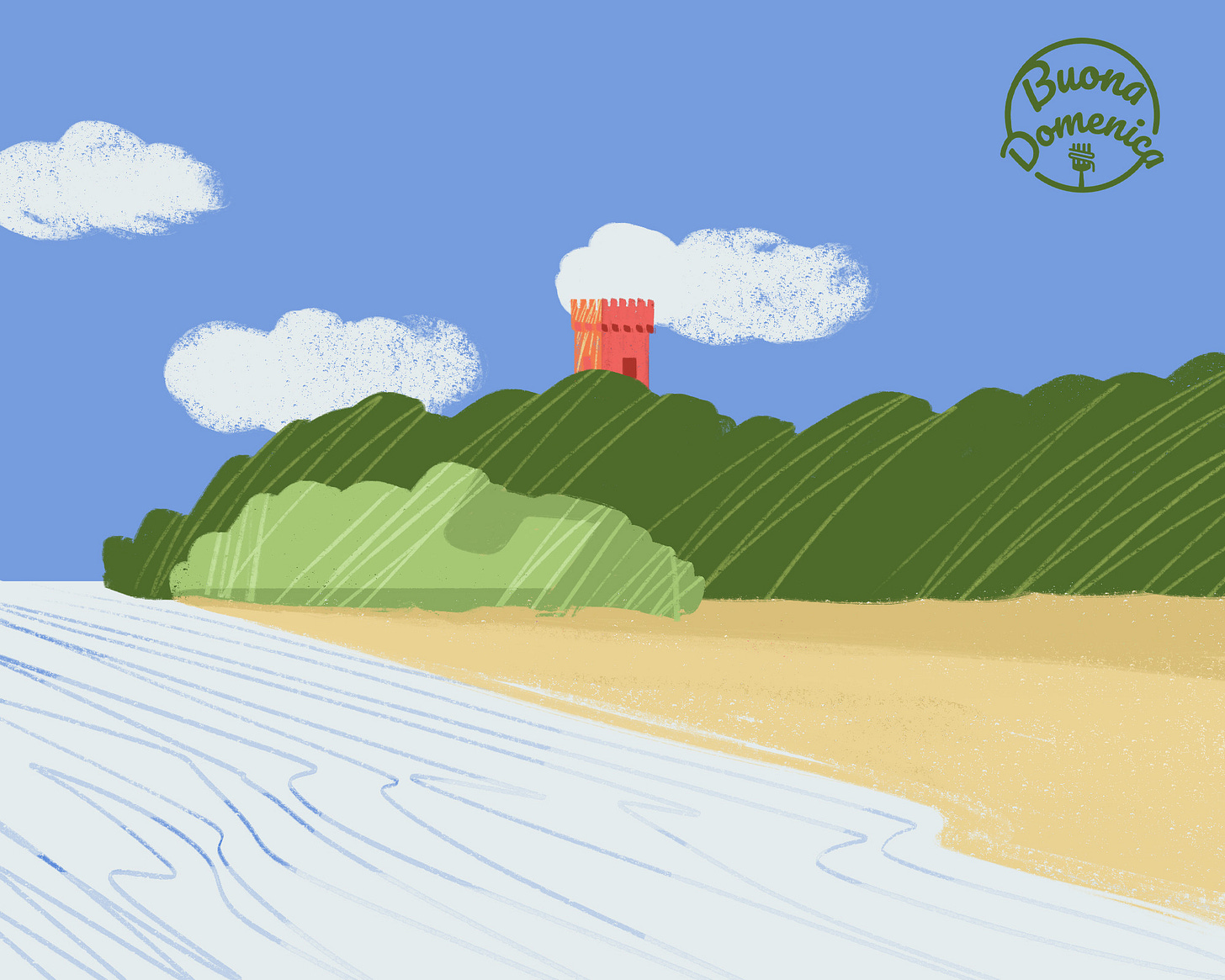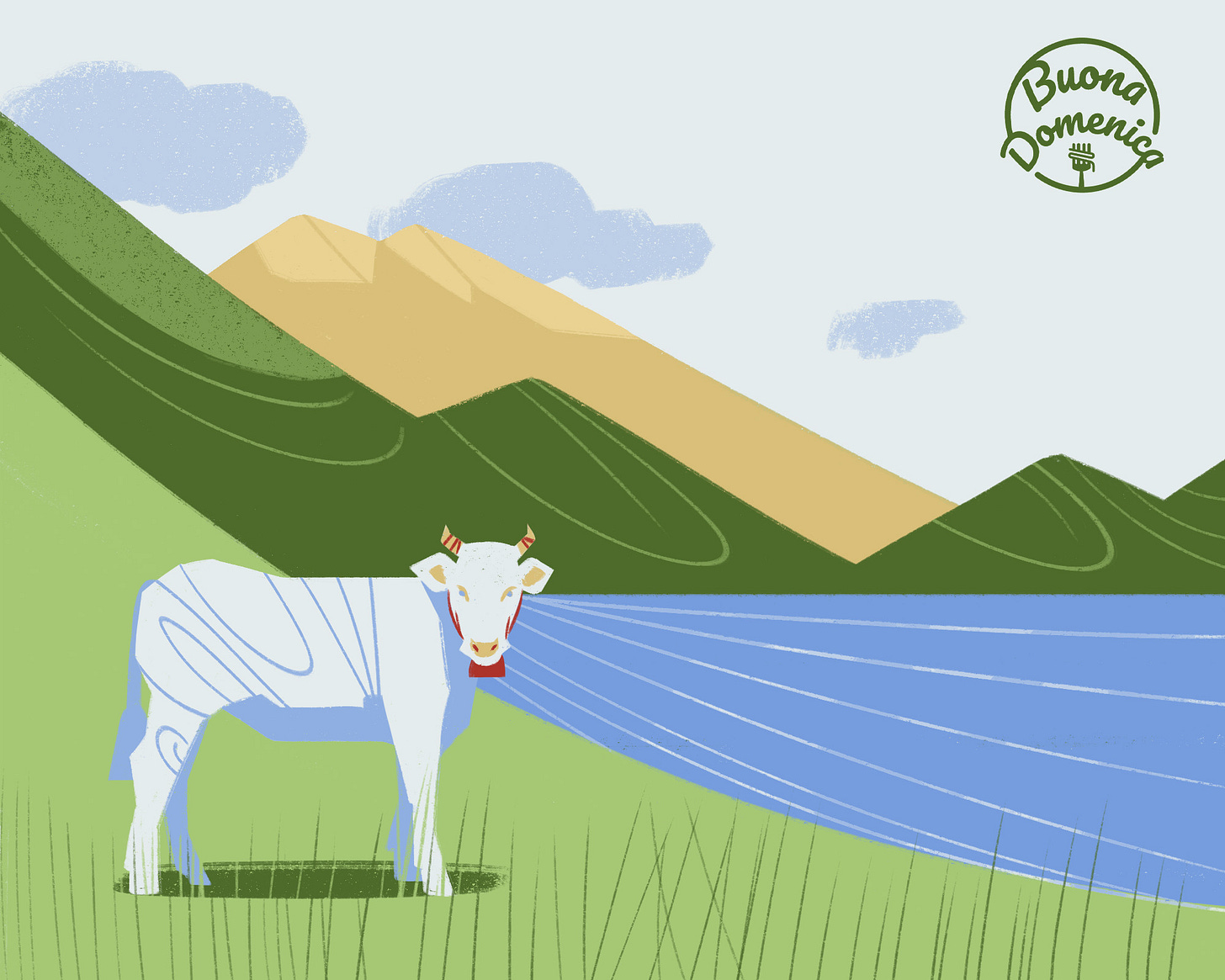
Greetings from Abruzzo, where my family and I have been vacationing for the past couple of weeks.
One of the mottoes that describe this region (there are several) is “mare e monti,” which translates to “sea and mountains.” Our house in Penne, in the hilly province of Pescara, is sort of a midway point between the two, and so we’ve been toggling back and forth, spending some days down at the beach in Silvi Marina on the Adriatic coast (where I spent my summers growing up) and others driving along zig-zagging Apennine roads, exploring villages chiseled into the mountainside.


You can see the two aspects of the region in Daniela’s illustrations, one featuring the Torre di Cerrano, a landmark at the far north shore of Silvi that dates to the 16th Century; the other of Campo Imperatore, a high plain in the Gran Sasso mountain range where sheep and Chianina beef cattle graze, wild horses roam, and people gather to eat arrosticini at various ristori that dot the landscape.
There have been lunches and dinners at typical roadside restaurants, the sorts of places you might easily drive by without giving a second thought to if you didn’t know better. Typically, they serve either fish or meat, never both. (If you’re close to the water it’s fish and seafood; if you’re in the hills or mountains, meat—grilled lamb, sausages, beef tagliata.)
For most of our time here it has been too hot to cook. A rainstorm blew through a couple of days ago and since then it has been mild and breezy, but the intense heat is expected to return this week. At the house, I’ve turned on the burners exactly three times—once to pan-fry tender zucchini I bought at the farmers’ market; once to cook cicoria ripassata (chicory that is first boiled, then sautéed in olive oil with crushed garlic); and once to steam a batch of green beans for a tomato and green bean salad.
These contorni have been accompanied by fresh sheep’s milk ricotta, tangy fior di latte (a type of cow’s milk mozzarella with a milky, spongy curd), and semi-aged pecorino; local culatello from the alimentari; porchetta from the truck; and, once, really good, savory chicken and pork involtini that we picked up at Nonna Ersilia, a casual spot here in Penne that offers a daily selection of prepared dishes that you can eat there or take home. For dessert: fresh fruit (watermelon, figs, apricots) and a walk to the gelateria.

One dish I’ve been making that requires no cooking is this Abruzzese take on panzanella—bread and tomato salad. I’ve been using a local bread called pizza pane, which I’ve not seen elsewhere in Italy; it’s a sort of mashup between ciabatta, focaccia, and basic bread. It has a bouncy crumb and a crust that’s not too crunchy. Use whatever good rustic bread you have on hand. The key is to let it sit out for a day or so to harden; very fresh bread isn’t sturdy enough for panzanella. The other “Abruzzese” ingredient is tortarello, a long, pale melon (pictured above) that tastes like a slightly sweet cucumber (it’s also known as an Armenian cucumber). It’s refreshingly crispy but lacks the “wetness” of standard cucumbers. In the U.S. I would substitute English cukes or standard ones from the farmers’ market.
Keep reading with a 7-day free trial
Subscribe to Buona Domenica to keep reading this post and get 7 days of free access to the full post archives.


